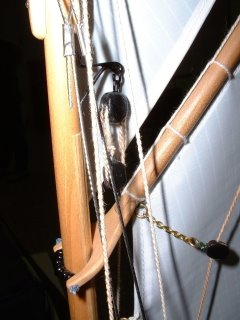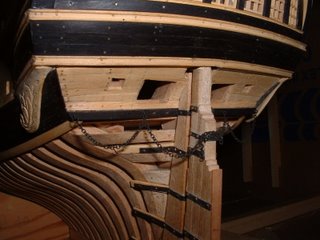 The club has had a number of meetings where the art of building a model ship in a bottle has been discussed. We have had it in mind to do a ship in a bottle as a club project but that has yet to happen.
The club has had a number of meetings where the art of building a model ship in a bottle has been discussed. We have had it in mind to do a ship in a bottle as a club project but that has yet to happen.One of the reasons for this is that building a ship in a bottle is a very personal project. Another may be that not everyone enjoys the same type or brand of booze. Everyone I know who has given instruction on building a ship in a bottle has said the first step is to drink the contents of the bottle.
Actually what is really being done with a ship in a bottle is that the modeller is building a small diorama or scene in a bottle that has a ship in it. As you can see from the ship in a bottle shown here, there is a small island with a light house and the ship sails safely on the ocean nearby.
Building a ship in a bottle requires a set of skills very specific to the task. One must be able to sculpt and paint an ocean setting. The modeller needs to build all the necessary tools, as no manufacturer makes them. To finish off the model one also needs to be able to tie that fancy knot that goes around the neck of the bottle.
The other essential quality needed to build a ship in a bottle is a great deal of patience. There is a great deal of deserved satisfaction that goes with completing one of these and every one of them becomes a family heirloom.



























































